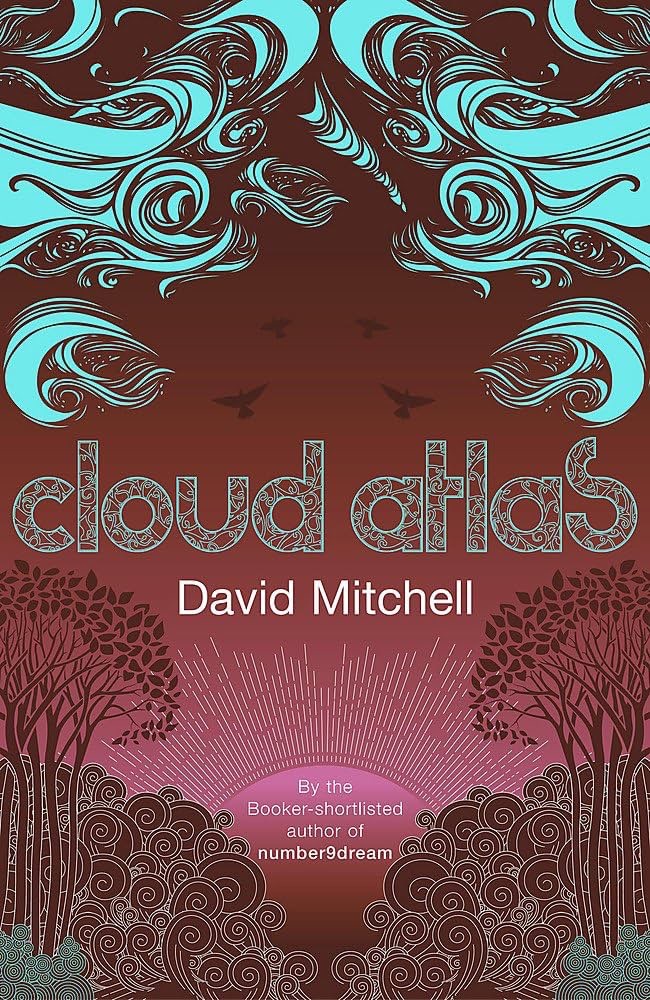I recently finished British novelist David Mitchell’s Cloud Atlas, the novel that brought him to the world’s attention probably because of the rather controversial 2012 film adaptation starring the likes of Hallé Berry, Tom Hanks and Hugh Grant (which I have yet to see!)
I started reading the book intending to go to an event that Southbank Centre had put on to celebrate the 20th anniversary of the novel’s publication. I didn’t end up going, but was hooked by the book nonetheless.
Prior to Cloud Atlas, I had only read one other work by David Mitchell, and that is his most recent novel, Utopia Avenue, which I adored.
The reason it is such an interesting novel is because its form. The book is made up of six separate narratives barely related to each other, set in time periods ranging from the nineteenth century empire to the corporatic future to post-apocalyptic tribal times. They are ordered chronologically and symmetrically, so we begin with the journal of Adam Ewing, an American lawyer from nineteenth century San Francisco who travels to a British colony in New Zealand and end with the ramblings of Zachry, sole survivor of a tribal genocide in the far post-apocalyptic future. To say the scope of the novel is ambitious is an understatement, but it is precisely Mitchell’s daring imagination behind the concept of the novel that was most enticing to me.
Whether or not it works is a different question. I have to admit, David Mitchell is a master in world-building, and so naturally the best stories in Cloud Atlas are the two set in the future: The Orison of Sonmi-451 and Sloosha’s Crossin’ and Everything After. But his weakness seems to be (at least in this novel) his ability to tie everything together to form a grand structure. In short, the final outcome of this great novel with ambitious scope falls short of the expectations in generates.
Another praiseworthy thing is Mitchell’s ability to adapt to different genres and styles. He is like a chameleon, changing colours as he embodies the extremely varying characters in the different stories. Some of his most compelling characters were Robert Frobisher from Letters to Zedelghem and Timothy Cavendish from The Ghastly Ordeal of Timothy Cavendish, even though these weren’t necessarily the best crafted stories.
In Cloud Atlas, David Mitchell succeeded in making his mark (and continues to do so) by portraying world orders beyond the current one. Even daring to do so provokes us readers to think, and that I believe is the essence of his creation.
Nevertheless, asking big questions are not the be-all-and-end-all of great literary creations. The risk that comes with asking bold and daring questions is whether or not you can create something that is formally or structurally equal to it, and to that end I think Mitchell might have fallen a little short of the goal (whether it was his intention to create such an ambitious literary work is also a moot point) as some of the stories The First Luisa Rey Mystery or Timothy Cavendish simply fall away disappointingly, leading us to think whether they had any contribution to the greater structure. The other problem is that it put a lot of pressure on the other stories to “tie things up”, so to speak. The Adam Ewing story, which began and closed to novel, felt like a story with a slightly forced moral expounding the virtues of multiculturalism against imperial colonialism at the end, reflecting Mitchell’s youthful political agenda that had not yet found a harmonious coherence with artistic structure.
All these things I say, however, I say in retrospect, and I judge only on the standards the novel has set itself. The process of reading the novel was nonetheless extremely enjoyable as David Mitchell is one of those writers with a creative mind that fascinates and intrigues his readers, and will continue to do so for many years.


Leave a comment